Virtual Field Trip
from virtual-geology.info

Locality 1.3a - Other outcrops of
the Granadilla Formation
It is important that you access
this field trip on a laptop or desktop PC.
Click on any image to enlarge
it - you will need to zoom in to see sufficient detail.
Where are we? Let's get some
more information on the Granadilla Formation, which we studied in detail north
of Chimiche. There are good road cuttings and small quarries along roads
TF-28 and TF-636, west of Chimiche. Visit the following locations in Streetview,
and make notes and sketches, paying particular attention to the geometry and
basal contacts of the units. This additional information will help you in interpreting
your log. Remember that these are very young rocks, and have not been affected
by folding or tectonic tilting.
- Follow TF-28 west, away from Chimiche,
from this
point just west of the TF-28/TF-636 junction, as far as km post 69. Most
of the exposures are in Unit G1, but G2 and G3 are sometimes seen above it.
Pay particular attention to the nature and attitude of the base of G1 (which
lies unconformably on brown paleosols developed on top of the older rocks
beneath). Look at the bedding in G1: is it all horizontal, as north of Chimiche,
or does the dip vary? How can you explain this?
- Observe the base of G1, which
lies on older breccias, in this
road cut.
- The road
cut just west of the 'Granadilla 3' sign in Los Blanquitos.
- The old
quarry north of the road on the east side of Granadilla. Describe the
base of Unit G1, which lies on older brown rocks.

The section west of the school
at Los Blanquitos
Explore the
outcrops north of the road in Streetview. The outcrop next to the track
is in Unit G1, whose base is not exposed here. There used to be access to good
exposures through the Granadilla Formation in the quarry behind, but it is now
occupied by a house. The photos below were taken several years ago.
Pay particular attention to field
relationships - contacts between units, how units change as you trace them laterally,
etc.
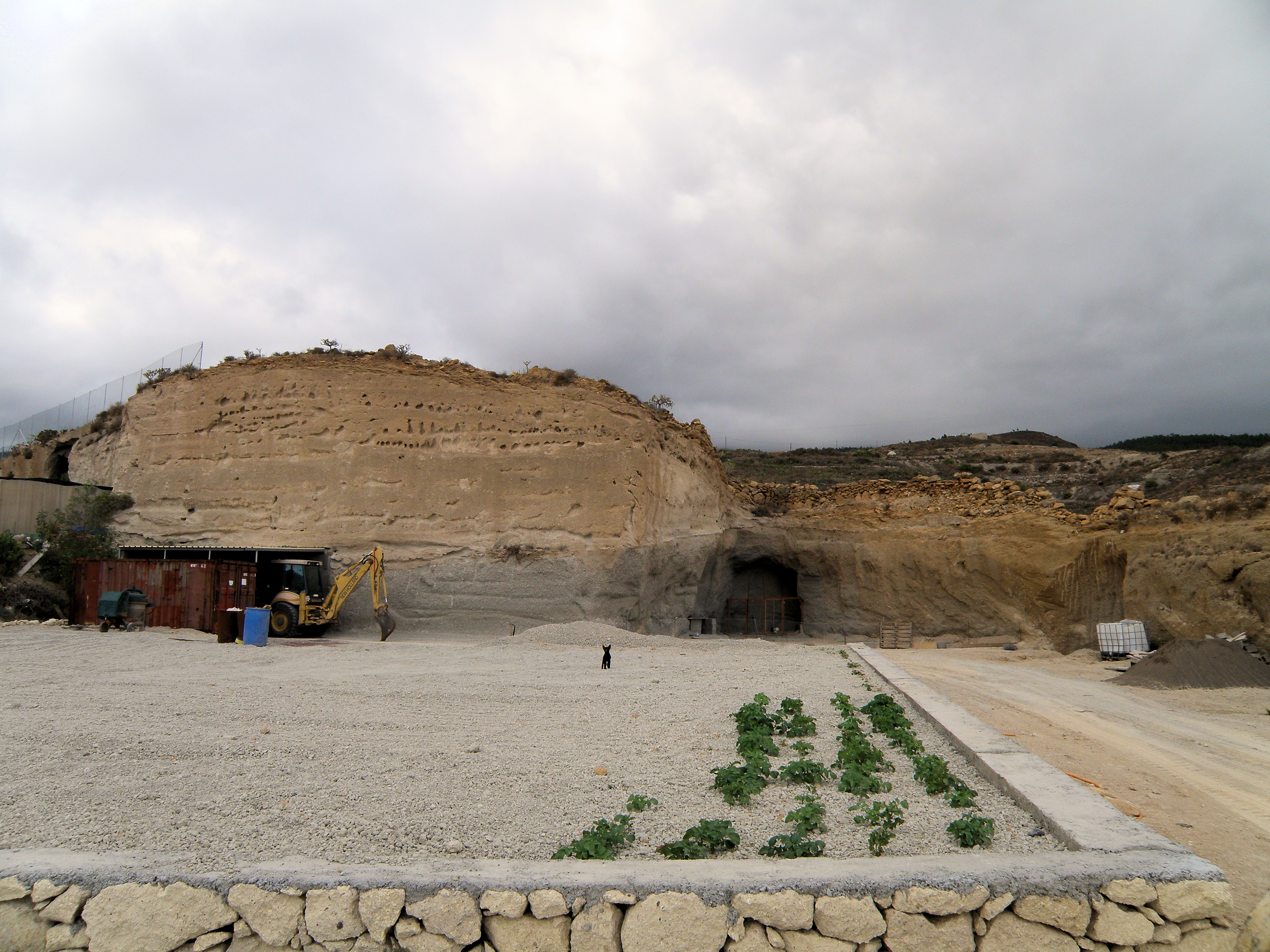
Figure 1.
The quarry during construction. View to north. Unit G1 is the grey material
at the base; Unit G2 stands out as a thin, harder bed; Unit G3 forms the
yellowish upper two thirds of the face; it is overlain by bedded deposits
(Unit H) right at the top, as in the Chimiche section. |

Figure 2.
Part of Unit G1 in the track section leading to the quarry. Pen is 15 cm
long. There are several thin, fine ash beds within the pumice deposit at
this location. How might they have formed? |
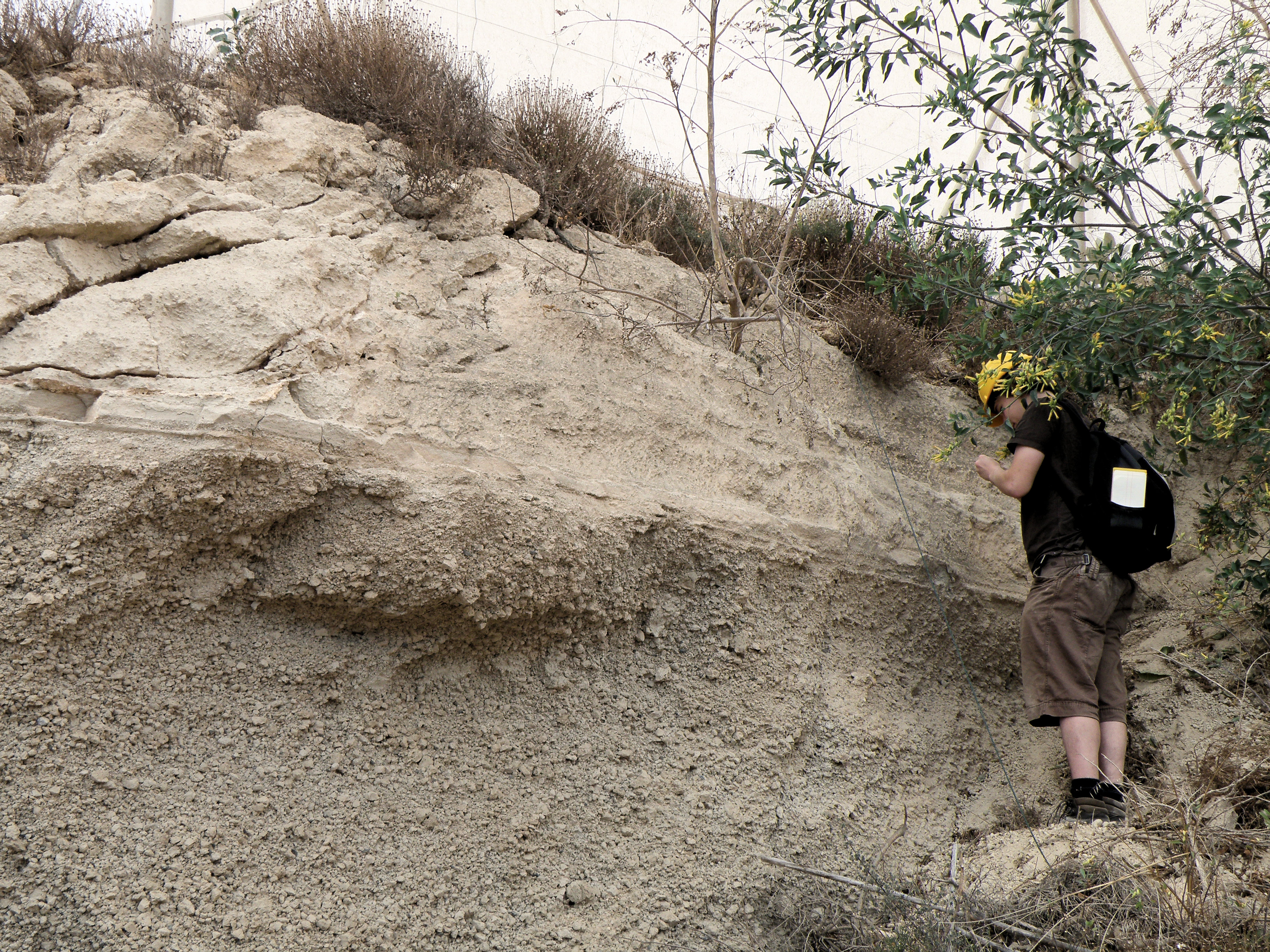
Figure 3.
Above the track section. The top of Unit G1 is overlain by G2, which is
thin and bedded, then the lower part of G3. |
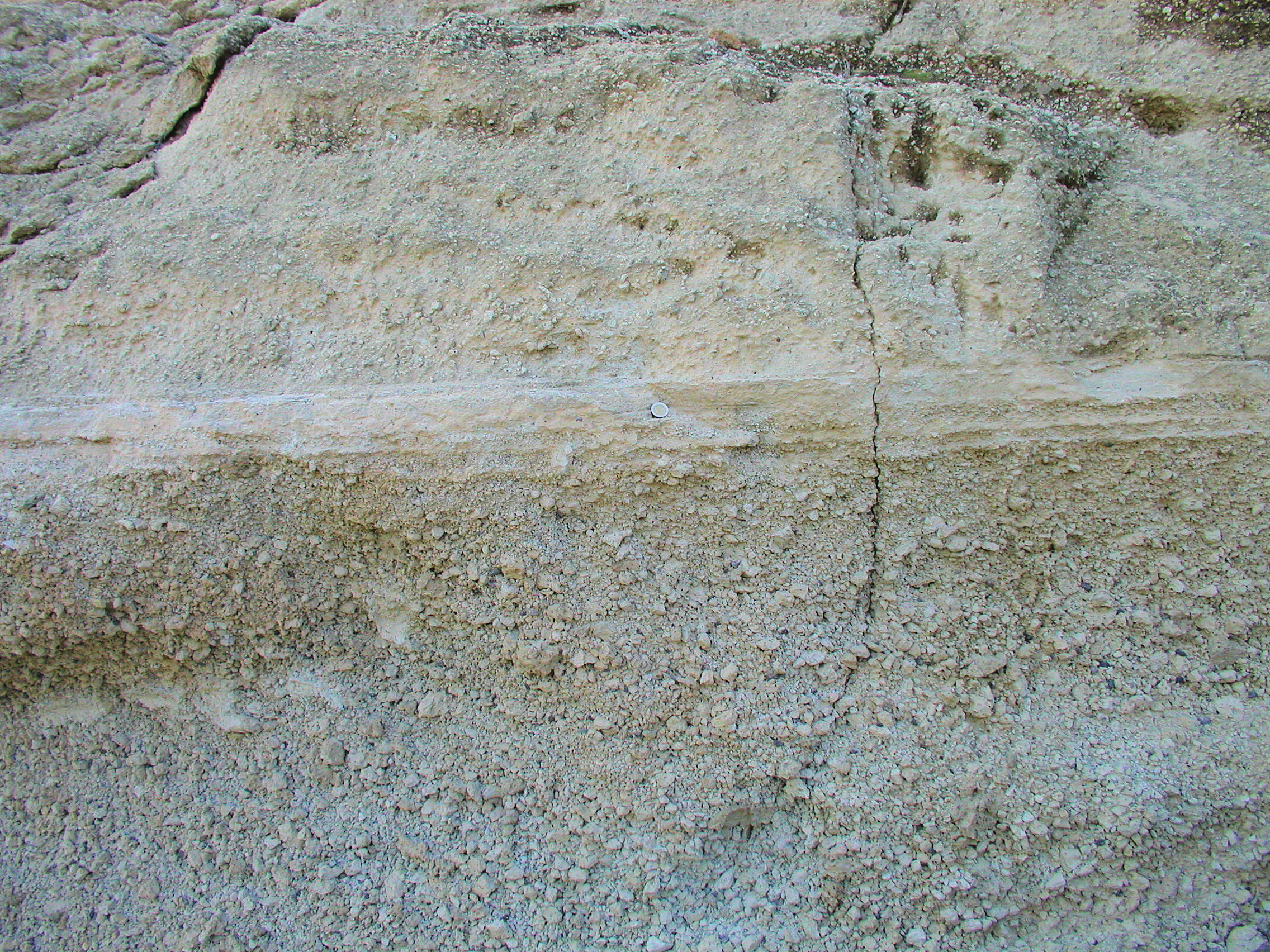
Figure 4.
Close-up of Figure 3, showing the bedding in Unit G2. Coin is 23 mm diameter. |
|
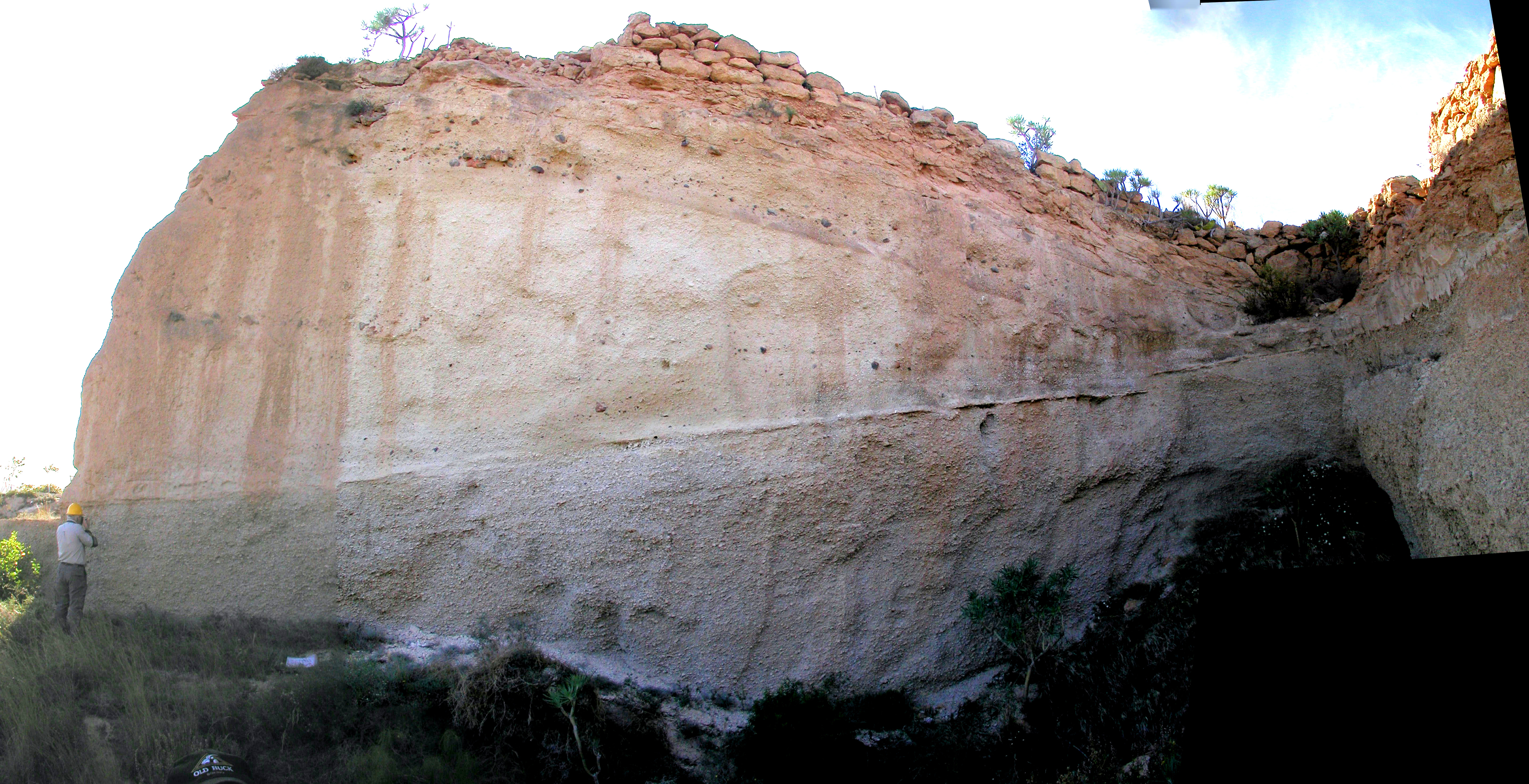
Figure 5.
The quarry face before construction. The main face looks east; the face
on the far right looks south. The vertical brown streaks are iron staining,
due to water running down the face.
Compare with Figure 1, which
shows a broader view of the same area. Identify Units G1, G2 and G3, and
describe and draw the field relationships.
|
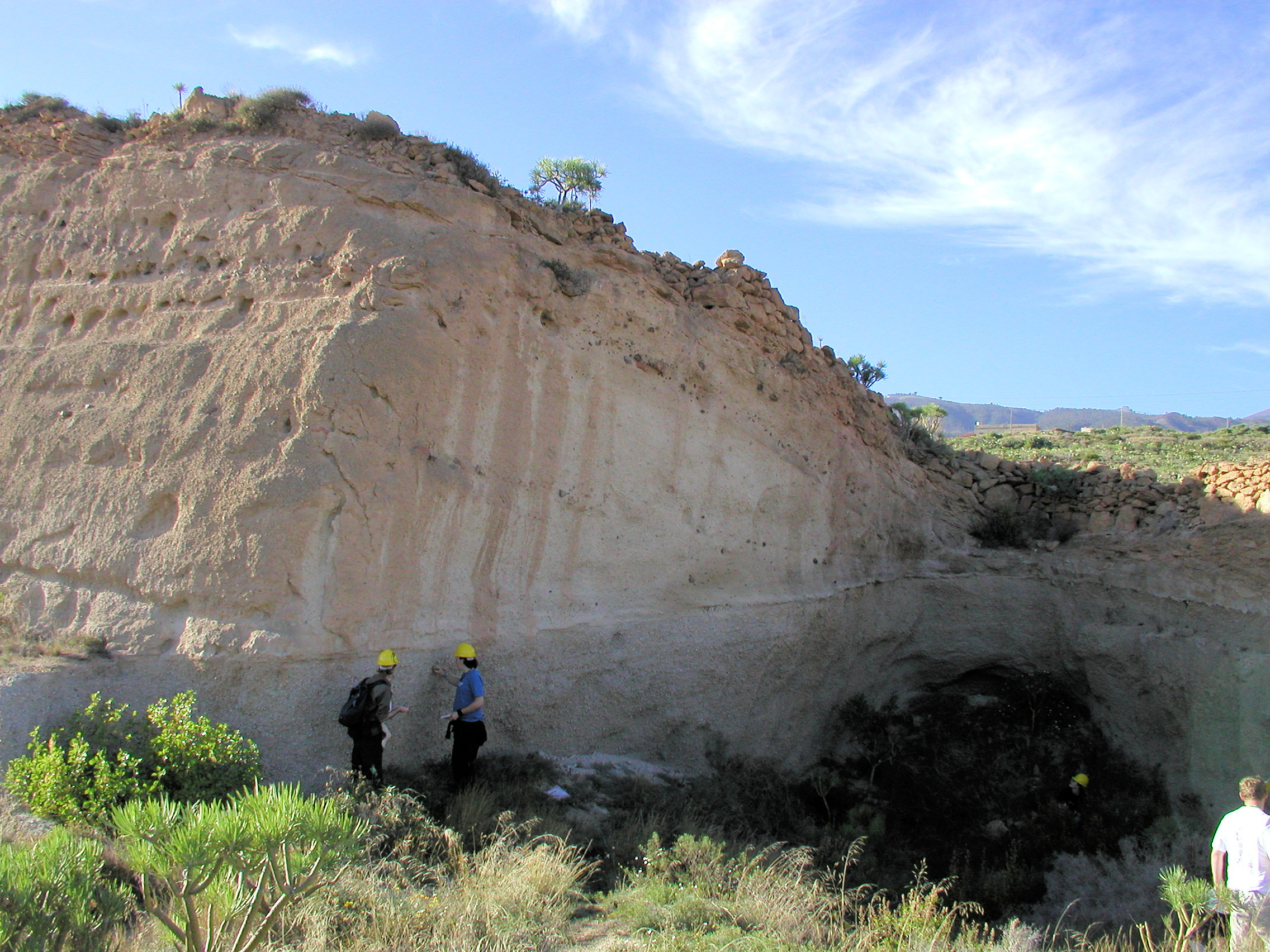
Figure 6.
A similar view to Figure 5, but showing 3 quarry faces at right angles
to each other (from the left, facing roughly south, east and south respectively),
giving a 3-D view of the deposits.
|
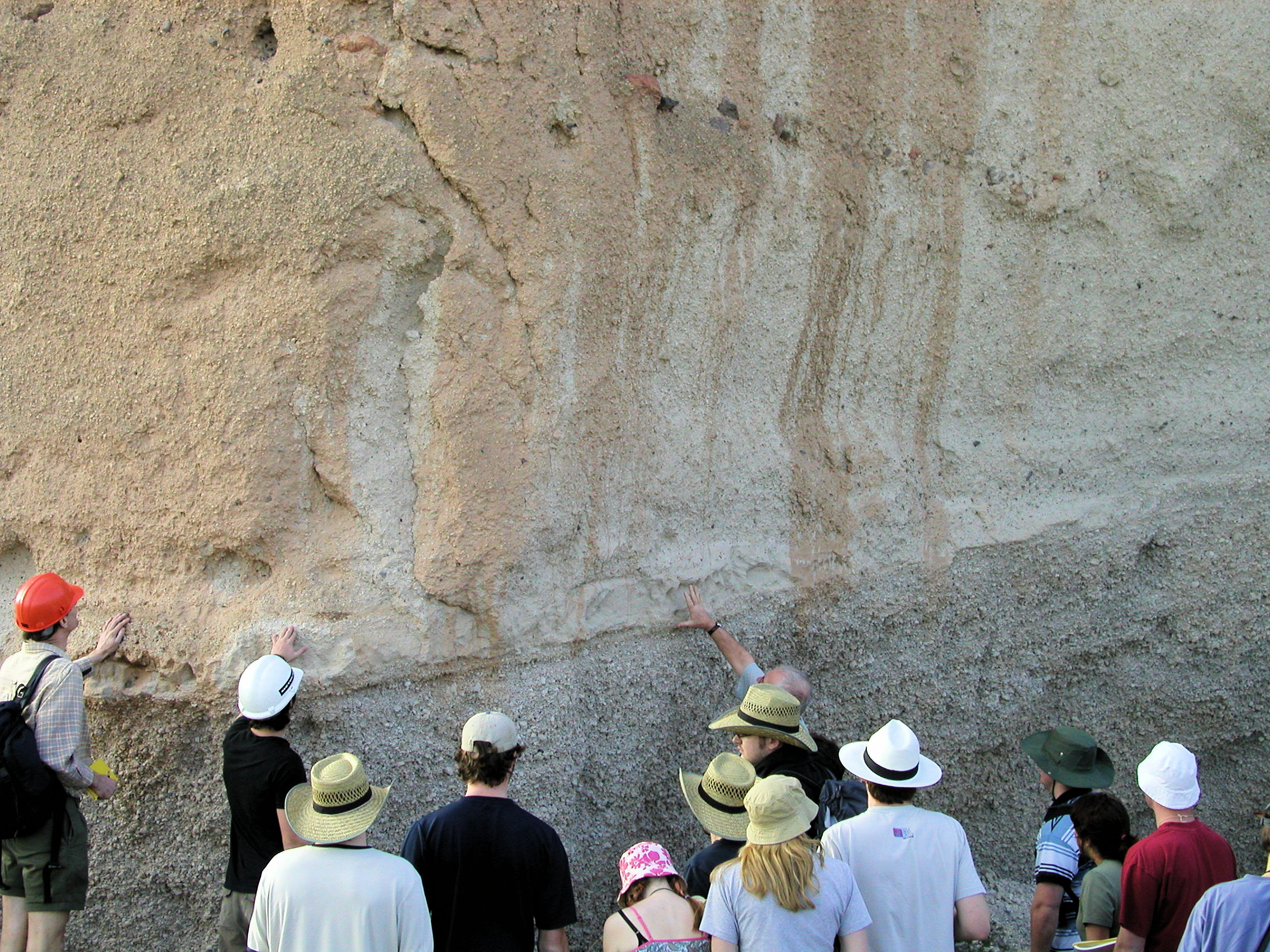
Figure 7.
Close-up of the left side of Figure 6, showing the junction of 2 quarry
faces. The geologist's thumb is aligned along the base of Unit G2. |
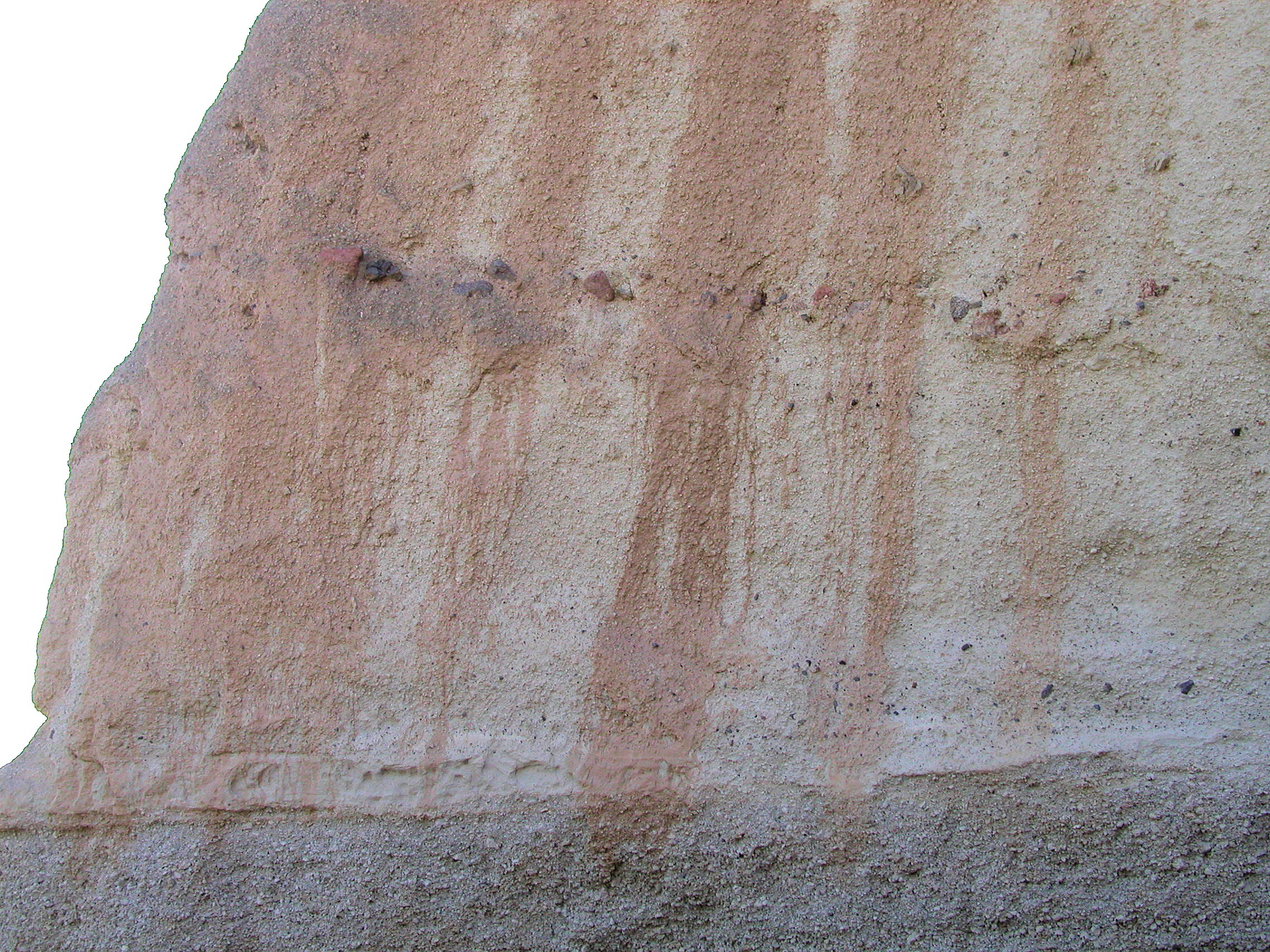
Figure 8.
A close-up of part of Figure 6. Note any features or variations you can
see within unit G3.
|

Where next?
Return to the main
locality for the Granadilla Formation north of Chimiche, and make sure you've
completed all the tasks, including additional information you have acquired
from the outcrops on this page.

This page is maintained
by Roger Suthren. Last updated
8 March, 2021 2:38 PM
. All images © Roger Suthren unless otherwise stated. Images may be re-used
for non-commercial purposes.
![]()
![]()